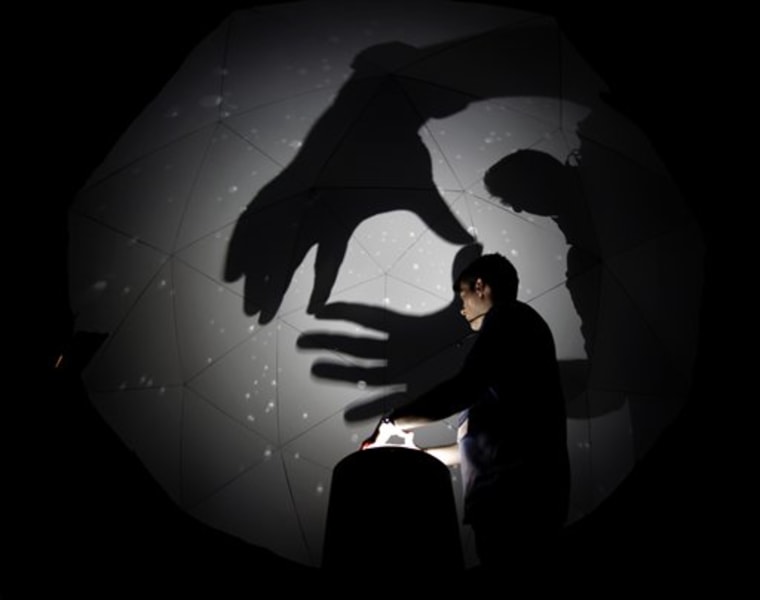When Microsoft Corp. researchers think about the consumer technologies of the future, some of the physical touchstones of today, like sticky notes and souvenirs, take on digital form.
(Msnbc.com is a joint Microsoft - NBC Universal venture.)
Researchers from all over the world converged on Microsoft's main campus Tuesday to show off their latest projects in a hall set up like a school science fair. All the programs and gadgets on display were works in progress, and only some will make it into real-world technology.
But even as the software maker tightens its belt to survive the economic downturn, it has pledged to continue spending money on research that doesn't neatly translate into profits.
Researchers from Cambridge, England, traveled to the annual meeting, dubbed TechFest, with a series of prototypes meant for the home. One, called Family Archive, is the digital equivalent of stuffing memorabilia and photographs haphazardly into a box and tossing it in the basement.
David Kirk, one of the Cambridge researchers, plugged a thumb drive into the device, which looks like a portable kitchen cart with an embedded touch screen. Digital pictures splashed onto the screen, and Kirk could spin and zoom by dragging his fingers across the surface — much like how Microsoft's touch-screen Surface table is operated.
The program lets people create virtual boxes to stash photos, and eventually, videos. It can also take a photo of an object placed on the surface and stash that, too. Kirk said prototypes have been placed in three families' living rooms, with surprising results, including the digital capture of at least one live kitten.
The Cambridge group also showed off a program to help archive digital ephemera, from photos to Twitter messages, along a timeline, and one that "hand-delivers" saved messages and reminders when people with linked Bluetooth phones stand in close proximity.
Researchers from the U.S. and Asia demonstrated projects that fall into a category they call "augmented reality," or adding a layer of digital information to the physical world. Michael Cohen, a Redmond-based researcher, pointed a cell phone camera at a building facade. On the phone screen, labels popped up, and Cohen described a scenario in which clicking on one would bring up the restaurant's menu. The underlying program matched the shapes and shades in what the camera "saw" to a stored image and its labels.
When Darren Edge, a Beijing-based researcher, turned a handheld Webcam toward his own laptop, his screen switched into a mode that showed what his Webcam saw — the computer, his desk — plus a chaotic layer of dozens of virtual sticky notes scattered on the screen.
The idea, he said, is to let the computer user store bits of information, photos and Web bookmarks in a way that's more like the physical world. (He did not say whether he thought masses of sticky notes should be a computer user's organizational paradigm.)
One of the researchers who brought Surface and its spherical cousin to TechFest was back, this time standing inside a handmade cardboard dome. Instead of swiping his hands across a screen, he waved them above a camera-and-projector combination. Each gesture zoomed or twirled Wilson and the reporters standing inside the dome through different types of three-dimensional data — a planetarium-style display of the universe, or a visual web-like representation of someone's Facebook social network.
Another set of projects moved the touch-sensitive area to the back of hand-held devices, making it easier to navigate without blocking the content on small screens with big fingers.
Redmond researchers also continue to come up with ideas for tasks that should be doable from the car. Michael Seltzer climbed into a mock-up of a driver's seat. An "earcon" — the audio equivalent of an icon — prompted him to listen to a computerized voice reading his text message, and he spoke back to the machine to send a quick text reply.
Other projects centered on saving power in data centers, improving Web search and social networking and making better use of computers in schools in emerging markets.
